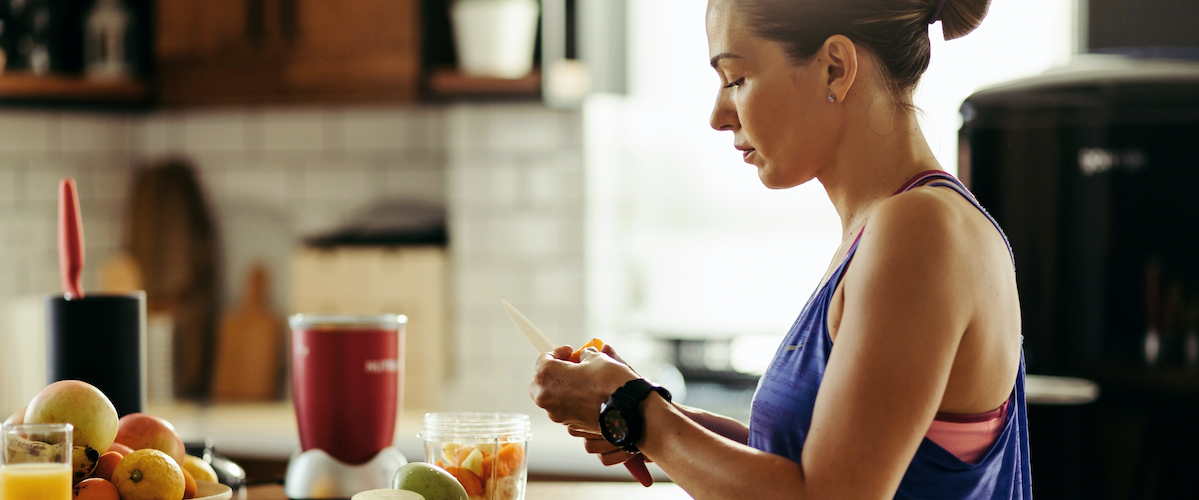Why Meal Planning is the Best Option For Your Goals and Results
Have you ever found yourself confused as to how you should improve your nutrition? Maybe you’ve been eating healthily for a while, but don’t have a good idea of how you can use that information to your advantage?
Today, we’ll discuss the value of diet analysis, how to look at past experiences, extract valuable information for your future decisions, and where meal planning fits into the picture, but before we do that, let’s first define meal planning, because meal planning can mean several different things to different groups of people.
A common misconception is that it’s the bodybuilder baking 10 chicken breasts and putting them in tupperware containers in the fridge. True -- to an extent, but meal planning can be used to control weight, build muscle, or even a way to remove allergens from a diet for those people who are sensitive to specific types of foods.
In short, you are figuring out what types of meals you will be eating over the next few days, sourcing the ingredients, and then preparing such.
Diet and Recipe Analysis: Study the Past
By looking at your past nutritional experiences/meals, you can get a better understanding your preferences, tolerances, energy levels, and overall - just what kind of food you enjoy eating. For example, a cyclist may feel more satiated consuming more carbs than the average person because they will burn more throughout the course of a ride.
It’s also crucial for understanding what has worked for you, what hasn’t, and how you can set up a sustainable eating plan. Perhaps you’ve tried keto, more vegetarian, or even a more raw food type of diet, and it’s important to ask yourself did your energy level crash suddenly? Did you get headaches or have irritability? Did you have enough energy to get through your workout(s)?
The True Value of Meal Planning
What are the benefits of meal planning? For starters, meal planning is fantastic because it helps you better organize your life, save money, and stick with healthier foods, which you know work for your body and align with your fitness goal(s).
First, buying products in bulk and cooking them at home comes out much cheaper in the long run, which is great if your goal is to eat healthily and stick to a budget.
Second, meal planning saves you time. Instead of thinking about what to cook or prepare every day, you spend a bit more time one day, and you don’t have to worry about it for at least a few days. A simple trick is to create a Google Drive Spreadsheet and plan out your meals for the week, and you can even add a column and track energy levels and add notes.
Third, by spending the time, effort, and money into preparing several meals, you’re more likely to stick with them throughout the week and consume healthy leftovers vs ordering out. After all, you wouldn’t want that effort and money to go to waste.
Plus, given the current world situation, there are many people who don’t have a ton of options yet for eating out. Most people eat at home these days, so planning and meal prepping are two simple tactics that create discipline and organization in your life.
How to Start Meal Planning Today And Set Yourself Up For Nutritional Success
1. Choose a couple of recipes with ingredient overlap to start with
Start by considering which meal you tend to skip or eat outside. For many, that’s lunch. Think of a simple recipe you might put together easily—for instance, chicken with rice, pork and potatoes, fish and quinoa.
2. Buy the necessary ingredients
Determine what ingredients you’ll need to produce at least four of these meals—for example, four chicken thighs and a bag of rice. Get the necessary seasoning, oils, and other ingredients you typically use for your cooking.
It’s also a good idea to get some fresh veggies and fruits you can easily add to your meals. For instance, leafy greens to chop up a quick salad for your meal.
3. Set aside some time to cook and prepare your meals
Set aside some time on a day off - for instance, on Sunday. Prepare the ingredients, cook them, and distribute the finished product in several containers. Wait for them to cool off, pop the lids on, and place them in the fridge.

